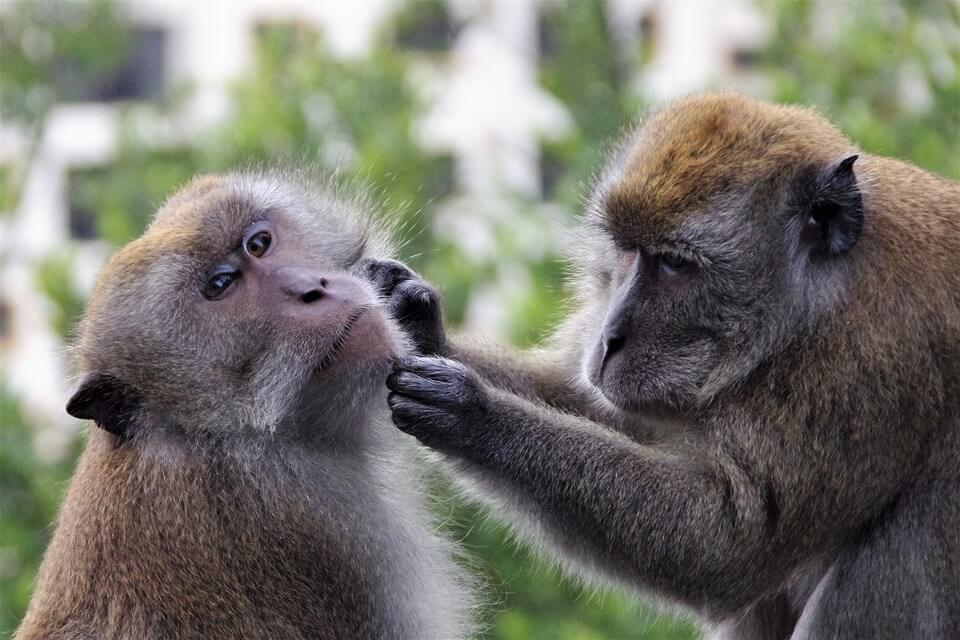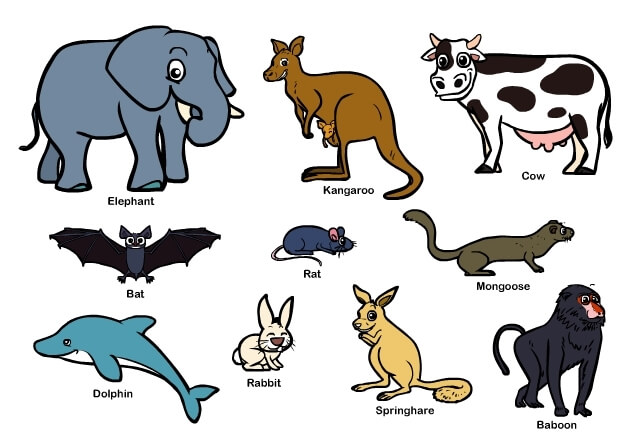We use affiliate links to run our site. When you buy through links on our site, we may earn an affiliate commission, without any added cost to you. Learn more
In my earlier blog I discussed interesting facts about some mammalian species. Today let’s talk about mammals as a whole and classification of mammalian family.
You can find mammals everywhere. They are present in the land, water, and sky. They have more than 4500 species in their class. As you all know humans are also a mammal.
The largest living mammal(also the largest living animal) is a blue whale. It can be 30 m in length. Whereas the smallest living mammal is the bumblebee bat which is 1 inch in length.
But how we can distinguish a mammal from the rest of the animal. Let discuss some of the important features of a mammal.
Presence of Mammary Gland:
The first and foremost character of a mammal is the presence of a mammary gland. The name mammal comes from there. Now, this mammary gland secretes milk which used to nurse the young ones.
Almost all the animals in this class give birth to young ones and do not lay eggs. I said almost because duck-billed platypus and Echidna are the two types that lay eggs and also hatch them.
Presence of Hair:

All the mammals have hairs on their bodies. The hairs will be present in a mammal in at least in some stages of their life.
Sometimes the hair may have transformed into many other forms like fur, whiskers, spines, or even horns.
Hairs play a very important role in mammal’s life. They help in insulation, camouflage, act as a sensory organ, protect the skin, and sometimes (the rhinoceros) also used as a weapon.
Endothermic Mechanism:
Mammals(along with birds) are endothermic, which means they can generate their body heat unlike reptiles and other classes of animals.
They have an inbuilt thermostat present in the brain which regulates their body temperature. This is why mammals are also called warm-blooded animals.
Presence of Lungs:
All the mammals where ever they might live, need air to breathe. That is why you will find the aquatic animals to come to the surface at a regular interval.
Mammals are the inhabitants of class Mammalia under phylum Chordata and sub-phylum Vertebrata.their are some orders under the class Mammalia which are mentioned below. The total number of orders is debatable among scientists.
The following are the orders under class Mammalia:
Artiodactyla:
They are the hoofed animal with the presence of an even number of toes. E.g, The giraffe, The Cow
Perrisodactyla:
They are the hoofed animal with the presence of an odd number of toes. E.g, The Rhinoceros, The Horse
Catacea:
They are the mammals that are completely adapted to the aquatic lifestyle and are found in water. E.g, the Blue whale
Chiroptera:
This class of mammals can fly. Their area of operation is air. E.g, The Bats
Dermoptera:
These animals cannot fly like Chiroptera. But they can glide through the air. E.g, The Lemurs
Lagomorpha:
These animals can leap. E.g, Rabbit, Hare
Carnivora:
They are the flesh eaters. E.g, Tiger, Cheetah, etc
Insectivora:
These are primitive, insect-eating animals.
Hyracoidea:
They are called the conies.
Proboscidea:
These animals have a proboscis. E.g, the Elephants
Rodentia:
This is the largest order of mammals. This includes all the gnawing animals.
Philodonta:
Scaly ant-eater. E.g, The pangolin
Primates:
Mammals with the most advanced brain. E.g, Humans, Chimps, Gorilla etc
Marsupialia:
These animal carry their young and immature babies inside a pouch. The Kangaroos
Macroscelidea:
The elephant shrews are included in these order
Sirenia:
This order includes the sea cows.
Tubulidentata:
Only mammal the aardvark.
Xenartha:
A primitive group of animals found in America only
Scandentia:
These are the tree shrews.
Thanks for reading. I hope this blog has given you some insights about the mammals.
Amazon and the Amazon logo are trademarks of Amazon.com, Inc, or its affiliates.

What’s Happening i am new to this, I stumbled upon this I’ve found It positively helpful and it has aided me out loads. I hope to contribute & help other users like its aided me. Good job.